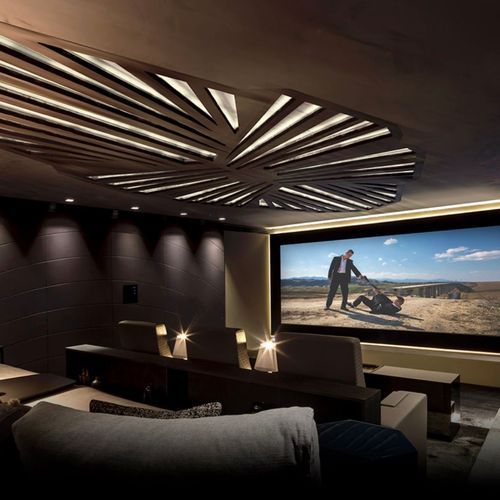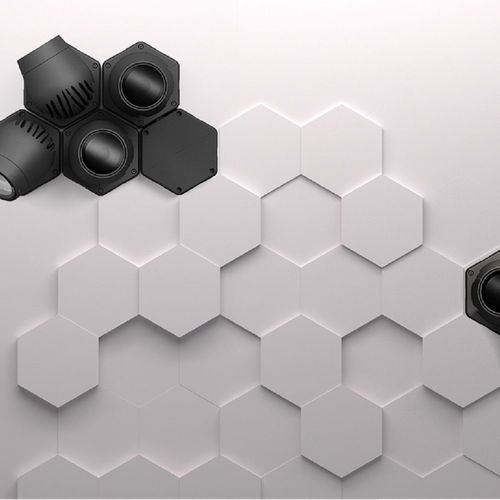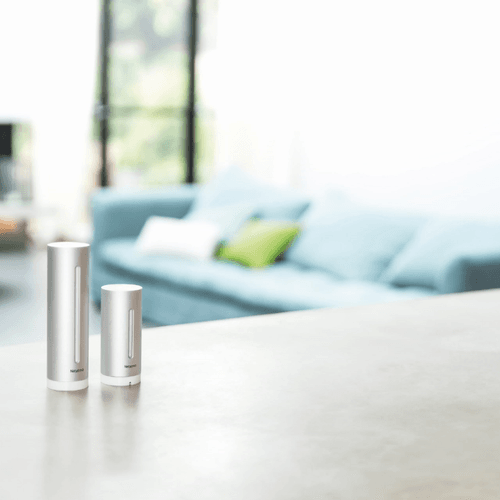TVs & Projectors
- Buying new TVs often starts with the desired screen size and the options contained within those limits. Surely, the idea of enjoying movies and sports in a cinema-like environment is tempting - but to make the best of it, TVs need to deliver a range of other features. At ArchiPro, we offer various models of televisions, from regular to smart TVs.About TVs & Projectors
Technology advances day by day, and so do the possibilities of visual entertainment. The number of pixels and lines of resolution in TV screens and projectors grows, offering a virtually life-like display. While the first HD TVs featured less than one million pixels, modern standards boast 8K technology with 33 million pixels per screen. The advantages such as HDR (high dynamic range) enhance colours, contrasts, as well as screen sizes to offer a true cinema experience at home.
Types of TVs & Projectors
HD and Full HD TVs
High definition (HD) TVs feature 720p (lines of resolution), with almost one million pixels - about twice the resolution of classic, analogue TVs. Flat-screen TV marked the beginning of the HD/full HD television era, now in constant progress due to the rapid development of new technologies.
Full HD TVs feature 1080p (lines of resolution) with over two million pixels - or, twice the resolution of the original HD screen, with impressive clarity.
4K UHD TVs
The reason to choose a 4K UHD TV is, above all, upgraded resolution with advanced video processing technology. The number 4 marks four times higher picture resolution compared to a standard full HD 1080p TV. It means sharper display, strong detailing, and an almost life-like experience, that gets more prominent with the higher HDR - dynamic range.
The HDR technology enhances both contrasts and the colour palette of the screen pixels to deliver a vibrant image. Also, with the amount of available 4K content, it’s possible to use all properties of this TV type to the fullest.
8k UHD TVs
Going up, 8K UHD TVs offer an even more superior experience than full HD or 4K UHD TVs, with a higher number of pixels. Still, while two times four makes eight, that equation does not apply to 8K TVs. In fact, an 8K UHD TV delivers four times the resolution of a 4K model, which also means 16 times more than a full HD TV.
With 33 million pixels, 8K technology delivers a top-class viewing experience. Their density allows for substantial screen diameters without compromising on high-definition resolution quality. Other features, such as HDR and upconverting, expand contrast and colour range while automatically converting the image to display the maximum resolution available.
Oled TVs
OLED is an abbreviation for light-emitting diode. Contrastly to popular LCD or LED screens, based on a single backlight flowing through filters and polarizing layers, OLED technology lights up each pixel separately to deliver sharp contrasts and an exceptionally rich colour palette.
OLED is a lighting technology that doesn’t define screen resolution. It can be found in 4K Ultra HD or 8K Ultra HD TVs, but not as an essential feature. What all OLED TVs have in common is a high dynamic range (HDR).
Qled TVs
Despite the name similarity, QLED TV technology is different from OLED. The Q stands for a film composed of quantum dots, added to the standard LCD screen sandwich. Quantum dots are microscopic molecules. Hit by LED backlight, they emit their own, coloured light which then travels through other layers to create the picture on the screen.
Projectors
Projectors use a lamp and a spinning colour wheel to produce an image generated by/through an external source. Any white, flat vertical surface can serve as a display, while the projector screens deliver the best image quality. A projector can be mounted to the wall, ceiling, or placed on a table, at an appropriate distance.
Most traditional projectors use lamps, and those models are the most affordable today. A simple lamp life span is, typically, between 1,000 and 3,000 work hours. LED projectors offer more convenience with up to 60,000 hours, while new technologies and laser projectors last about 30,000 - but also provide a more advanced display.
What is HDR Technology
While the number of pixels and their density makes an important factor for image quality, the best TVs and projectors feature a range of supporting technologies. A high dynamic range (HDR) technology is responsible for a higher-quality, more natural display with vibrant colours, strong shadows and highlights.
Most 4K and 8K Ultra HD TVs can play HDR content; however, not all of them provide the same picture quality. While the more advanced models feature more advanced technology, there is also more in HDR than meets the eye.
- HDR technology provides a rich colour palette, delivering life-like images close to the eye’s natural perspective.
- Exceptional clarity ensures a premium viewing experience for movies and sports events.
- HDR supports all kinds of content, from cable TV to streaming services, YouTube, and Blu-ray discs.
- HDR is available in multiple formats. HDR10 is a popular choice for streaming and Blue-Ray, while Dolby Vision allows scene-by-scene information and customized settings.
- HDR technology is now available on projectors, delivering a whole home-theatre experience in portable packages.
TVs vs. Projectors
While some prefer to own both and use them per need, others would rather choose either a TV or a projector. Each has its own pros and cons, including the price, technology, and maintenance options.
- Projectors can be more cost-effective in terms of screen size. A TV with a 2m diagonal typically boasts twice the price of a projector with similar properties. However, the supporting features such as OLED technology and lasers can significantly drive up the cost of both.
- In terms of maintenance, modern TVs are almost maintenance-free, as well as laser projectors. However, projectors based on lamps have a limited time of use before the lamps will need replacement.
- While both large-screen TVs and projectors feature 4K technology, projectors can showcase their full advantage on extra-large screens.
- In terms of screens, projectors offer more in size but also need a separate screen to display the image in full quality.
- Modern TVs offer generous, customizable brightness levels. The brightness of projectors is fixed and displayed in lumens. Higher lumens provide more flexible use, although a high-brightness projector with a few settings will probably not be the best choice for projections in the dark. Contrast ratios also play a role here, and the advanced models of TV offer more convenient overall use.
Outdoor TVs
TVs designed especially for outdoor use feature advanced technology to offer undisturbed entertainment and exceptional visual experience in any environment. This type of TV resists sunlight, elements, and glare. While all models are weatherproof and with enhanced brightness, some models are more suitable for use in direct sunlight. With the addition of sofas and recliners, any outdoor space can turn into a small cinema.
Projector Screens
While it’s possible to project the image in a plain white wall or a similar surface, it takes projector screens to experience 4k and higher technology in all its glory. A screen comes at an extra cost that doesn’t have to be substantial. Depending on different modes of operation, size and design, it’s possible to find models in a broad price range.
- Simple and affordable, manually operated, foldable screens
- Motorized pull-down screens
- Pop-up screens with stands
- Huge inflatable projector screens for a cinema-like experience
Things to Consider When Choosing TVs and Projectors
The role of the processor is to collect and contain information from devices such as cable box, satellite tuner, and similar, and translate it to the screen. More advanced models of TVs and projectors typically feature higher processing capabilities. The result is a smooth and fast stream with a clear picture.
While design depends on the manufacturer, thinner bezels and sleeker profiles can save more space, offer more flexible use, and pose a striking visual feature when off.
Both projectors and TVs can connect to home audio systems, to create a complete audiovisual experience.
Why ArchiPro?
No more endless searching -
Everything you need, all in one place.Real projects, real experts -
Work with vetted architects, designers, and suppliers.Designed for New Zealand -
Projects, products, and professionals that meet local standards.From inspiration to reality -
Find your style and connect with the experts behind it.Start your Project
Start you project with a free account to unlock features designed to help you simplify your building project.
Learn MoreBecome a Pro
Showcase your business on ArchiPro and join industry leading brands showcasing their products and expertise.
Learn More



